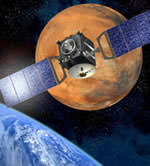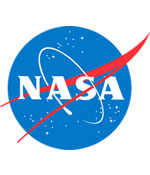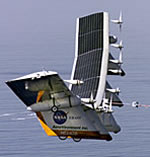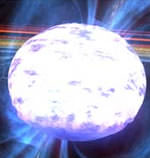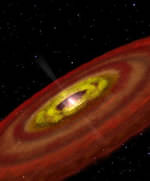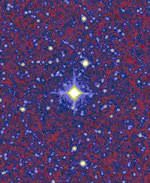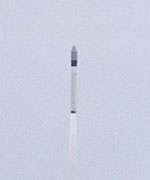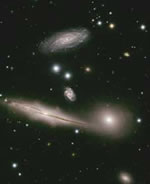It’s July already, time to organize your summer reading. Universe Today has a list of all the space and astronomy books scheduled for publication in July, 2003. I’ve provided a list of all the books, as well as the Author and a brief description from the publisher. I’ve also got links where you can buy them in the US, UK and Canada. If there’s something that interests you, just pre-order it and you’ll get it days after release. If I get any review copies, I’ll provide additional links to my reviews.
Of course, you can also put in reservations at your local library and beat the crowds. 🙂
| Image | Title | Author | Description | Amazon US | Amazon UK | Amazon Canada |
| To the End of the Solar System: The Story of the Nuclear Rocket | James A. Dewar | Chemically propelled rockets can lift less than 5 percent of their take-off weight into orbit, a fact that could forever limit the space program. Nuclear-powered rockets, however, with their superior thrusting power and speed, are radically different. So argues James A. Dewar in the only comprehensive history ever written of the nuclear rocket project. | US | UK | CAN | |
| ***image6*** | The Future of Theoretical Physics and Cosmology | Based on lectures given in honor of Stephen Hawking’s 60th birthday, this book comprises contributions from the world’s leading theoretical physicists. Popular lectures progress to a critical evaluation of more advanced subjects in modern cosmology and theoretical physics. | US | UK | CAN | |
| ***image8*** | Perilous Planet Earth: Catastrophes and Catastrophism through the Ages | Trevor Palmer | Reviewing our present concerns about the threat from natural disasters, such as asteroids and immense volcanic eruptions, within the context of history, this volume is written at a level that interests academics as well as general readers. | US | UK | CAN |
| ***image9*** | Seeing in the Dark: How Amateur Astronomers Are Discovering the Wonders of the Universe | Timothy Ferris | Paperback Edition | US | UK | CAN |
| Astronomy: A Beginner’s Guide to the Universe | Eric Chaisson, Steve McMillan | Like its best-selling predecessor, Astronomy Today (1993), this text presents scientific literacy in the context of astronomy, teaching students to think critically and analytically about the physical world and the development of science. | US | UK | CAN | |
| ***image7*** | Galileo’s Mistake: A New Look at the Epic Confrontation between Galileo and the Church | Wade Rowland, Allen Thomas | US | N/A | N/A | |
| ***image10*** | Star Watch: The Amateur Astronomer’s Guide to Finding, Observing, and Learning About over 125 Celestial Objects | Philip S. Harrington | The night sky is alive with many wonders??distant planets, vast star clusters, glowing nebulae, and expansive galaxies, all waiting to be explored. Let respected astronomy writer Philip Harrington introduce you to the universe in Star Watch, a complete beginner?s guide to locating, observing, and understanding these celestial objects. | US | UK | CAN |
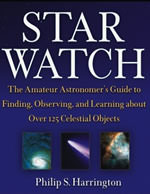
|
Dictionary of Minor Planet Names | Lutz D. Schmadel | US | UK | CAN | |

|
Firefly Atlas of the Universe | Patrick Moore | The Firefly Guide to the Universe is an encyclopedic examination of the stars, planets, and universe with the latest, most comprehensive information currently available. The book features the latest images from the Hubble Space Telescope which are put into context with clear and detailed text. | US | UK | CAN |
| ***image11*** | Traveler’s Guide to Mars: The Mysterious Landscapes of the Red Planet | William K. Hartmann | Paperback Edition | US | UK | CAN |
| Cataclysmic Variable Stars | Brian Warner | Cataclysmic variables are interacting binary stars that contain a white dwarf accreting from an orbiting companion. The study of these stars is currently undergoing an exciting renaissance as it embraces observations at all wavelengths. | US | UK | CAN | |

|
It Came from Outer Space: Everyday Products and Ideas from the Space Program | Marjolijn Bijlefeld, Robert L. Burke | What do anthrax protection, golf clubs, and cordless power tools have in common? Each was invented or improved with technology first developed for the space program. This book tells the story of 67 of the most consumer-friendly products born of space-related research. | US | UK | CAN |

|
Coming of Age in the Milky Way | Timothy Ferris | Paperback Edition | US | UK | CAN |

